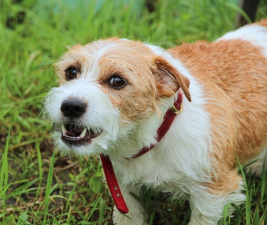Do you know the signs of stress in dogs? While every dog is an individual, they all share some common body language that lets you know they’re not happy. Recognizing that your dog is anxious lets you calm the situation before something bad happens.
Every so often we’ll see a shared video on social media that shows a child and the family dog. The video is supposed to show how sweet the relationship is. Oftentimes the child will hug or kiss the dog. Most of these make us cringe while we wait for the dog to bite or snap. If it doesn’t happen, it’s a tribute to that dog’s restraint. When it does, the person taking the video always seems to be astonished. We’re not. We’re dog trainers and we saw it coming a mile away.
Do you recognize typical stress signals in dogs? Most healthy dogs give a good number of warnings that they’re not happy. Dog anxiety manifests in many ways, and most of these videos show multiple examples of the dog’s discomfort with the situation.
What are the signs?
One of the first signs the dog isn’t comfortable is called “whale eye.” It’s when the dog turns their head to the side, still looking in the same direction. Some of the white of their eyes shows and that’s called “whale eye.” It’s usually an early warning signal that allows you to stop whatever’s happening and give the dog time and space. It’s the most common stress signal we see in the child/dog videos. If the people taking the video recognized the sign, the situation wouldn’t escalate into the danger zone.
Another stress sign for dogs is lip-licking. Again, it’s one of the first signs of discomfort and clear to anyone paying attention to the dog’s body language. This is actually an appeasement behavior, indicating “I’ll be good if you give me a chance.” Give your dog the chance.
There are other low-level stress signals dogs give. Yawning, stretching, and scratching all show the dog either doesn’t understand, is unsure, or is unhappy. We often see dogs stopping to scratch during Obedience and Rally classes. Dogs want to get things right. When they’re a bit confused, they’ll stop and scratch their ears. Sometimes it seems like they’re giving themselves time to think things through.
More serious indicators
There are obvious signs that the dog is anxious, wary, or tense. Everybody knows what it means when a dog is growling, snarling, or showing its teeth. Anyone persisting in aggravating the dog at this point is asking for trouble. That dog needs time and space.
There are all kinds of videos online of people “testing” their dog’s growl or snarl response, teasing them over and over. It’s not funny to harass a dog, even your own, into this highly aroused hostile state. Even if it’s a toothless, old little dog that can’t do any harm. The stress hormones flooding the dog’s system will take days to dissipate.
Less obvious, but still serious stress signs include when their ears are laid back against their head, staring, slow tail swings, and lowering shoulders.
Fear signs are stress, too
Fear can also cause dogs to be labeled “aggressive.” When a dog is feeling trapped and doesn’t know what else to do, it can react by growling, lunging, and biting. Fear aggression is usually why little dogs are reactive. Knowing the signs your dog is afraid lets you take action before the situation escalates. Things to look for include drooling, panting, and shivering. Some dogs may also “pancake” to the ground when confronted by something they fear.
Know and pay attention to your dog’s signs of stress. Most of the time all dogs need to recover their equilibrium is a little time and a little space. That ounce of prevention saves a world of hurt.
Enjoyed this post? Click here to sign up for the weekly newsletter and never miss another!















